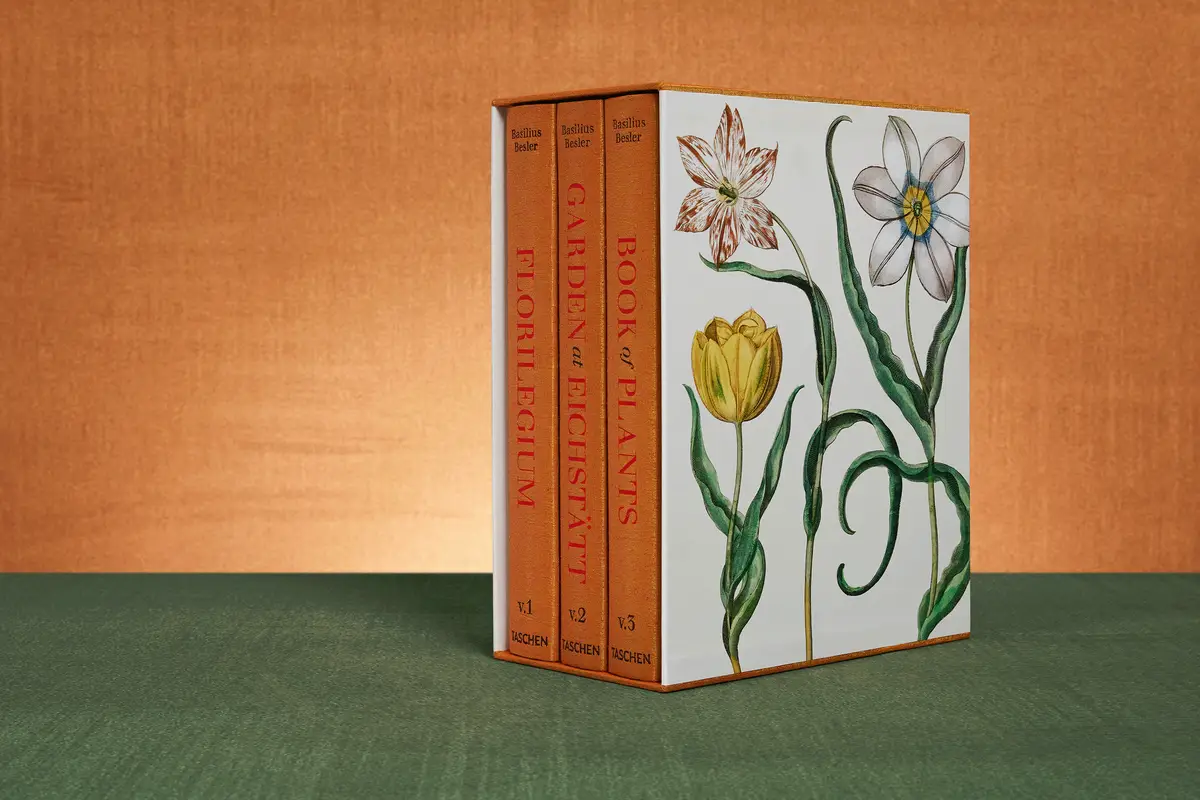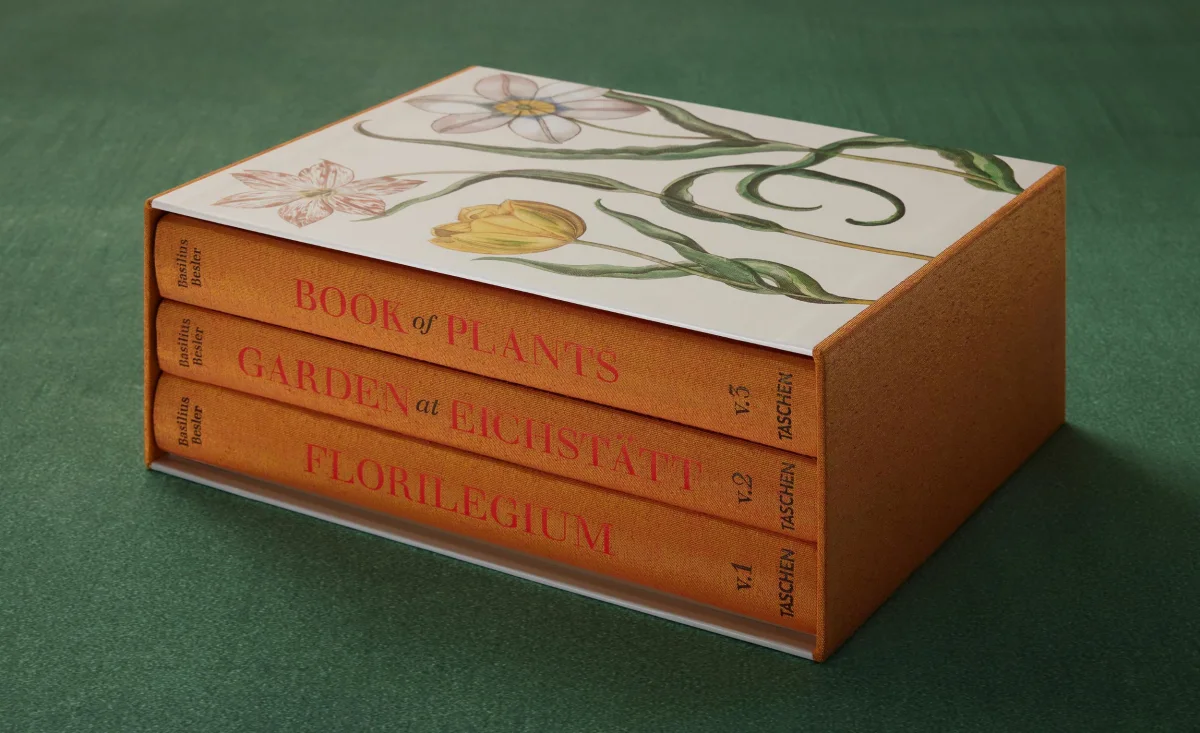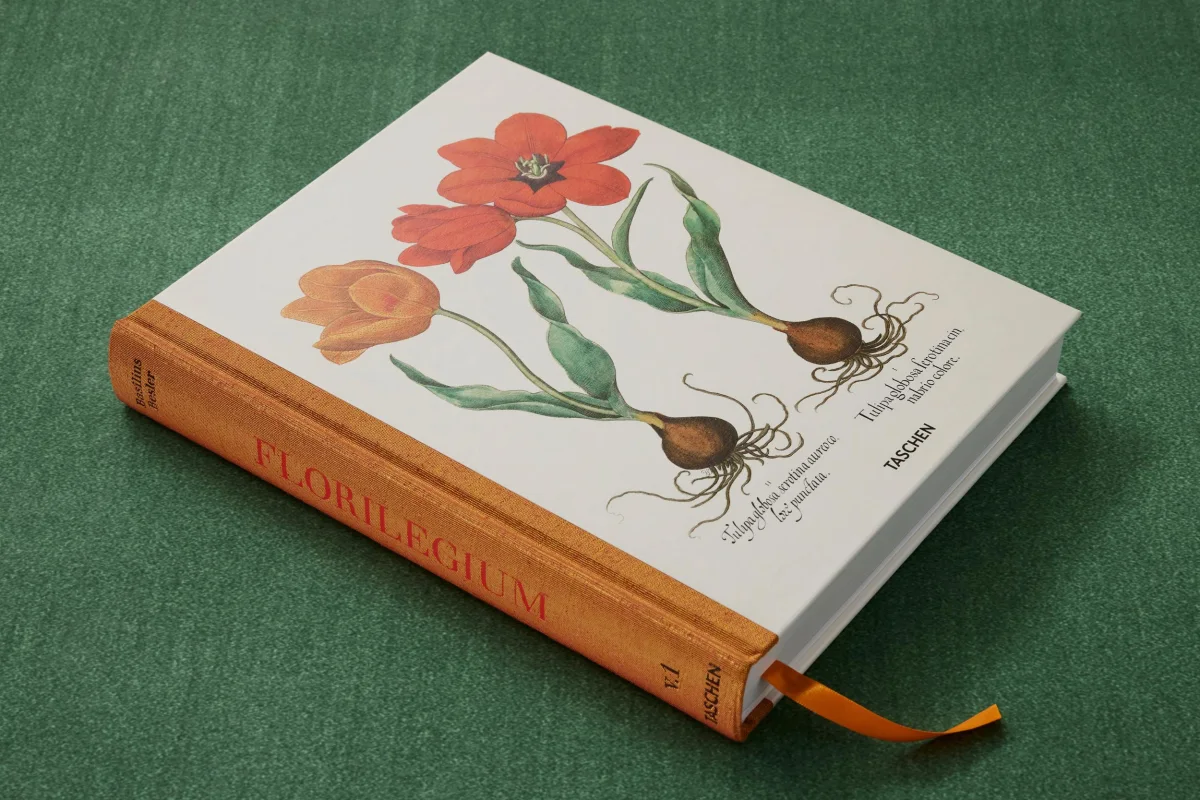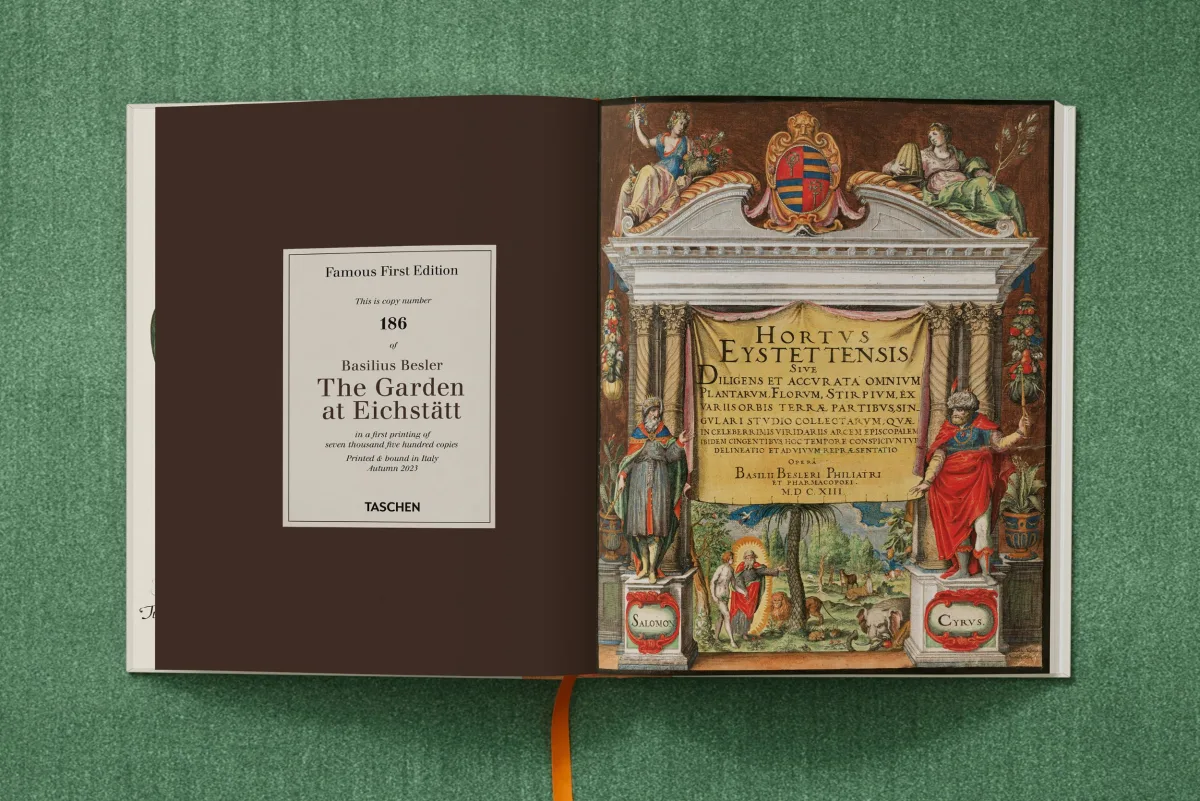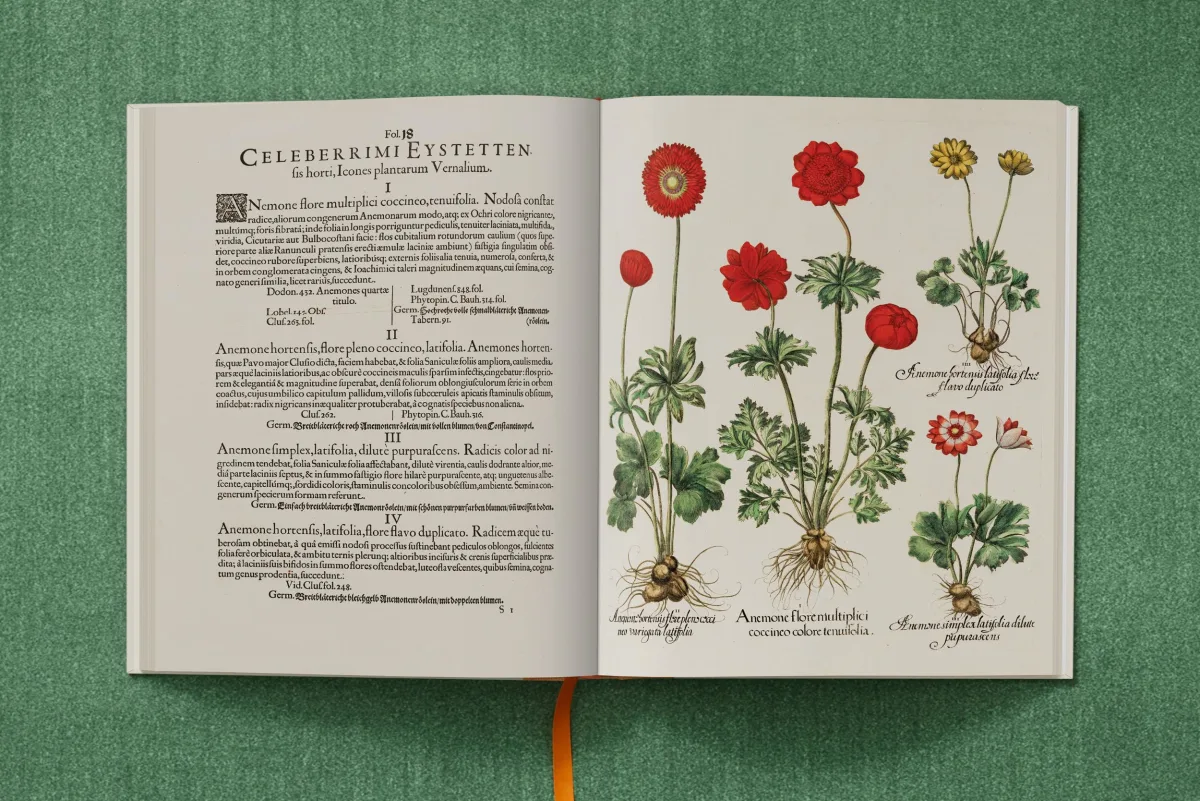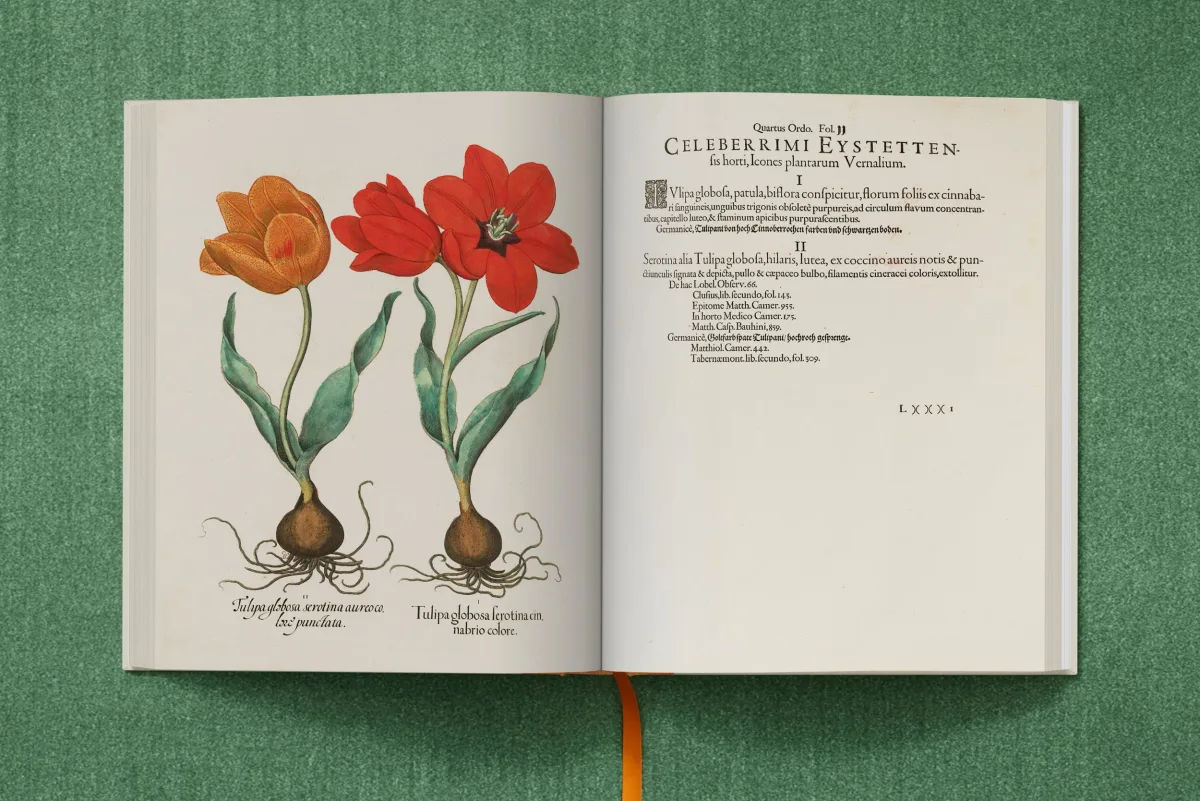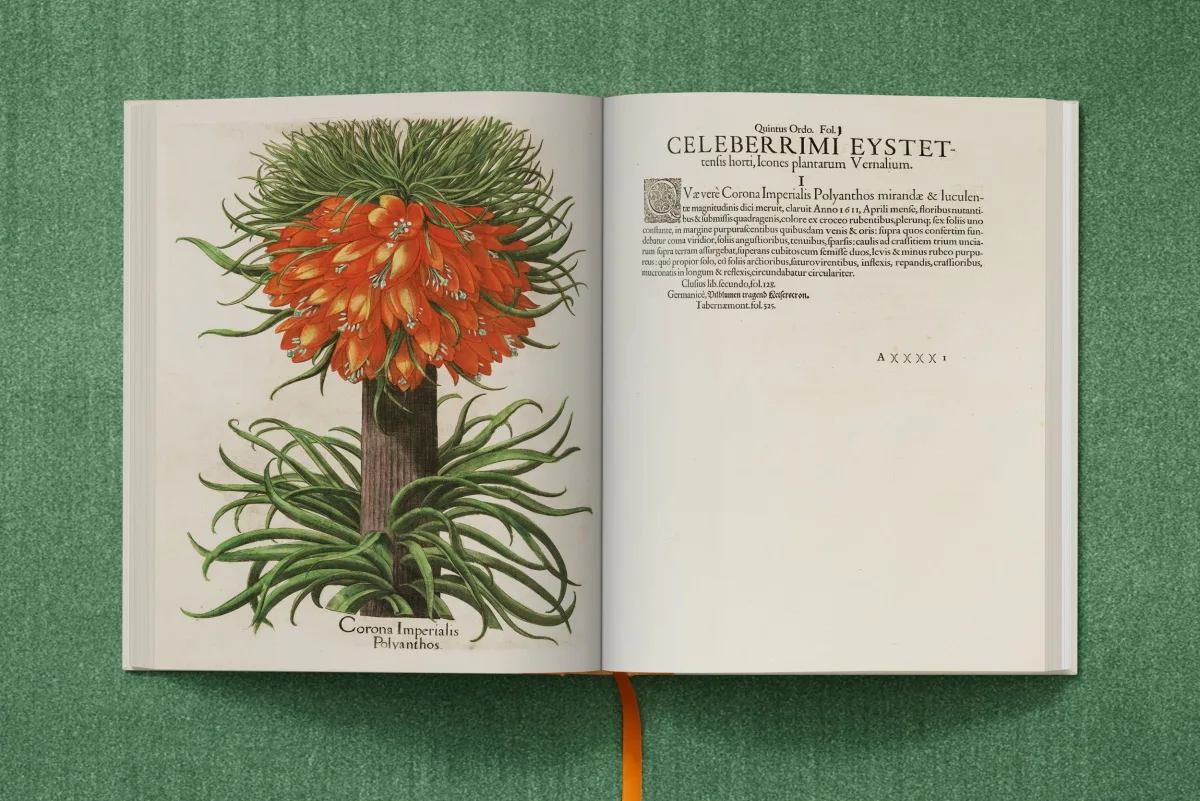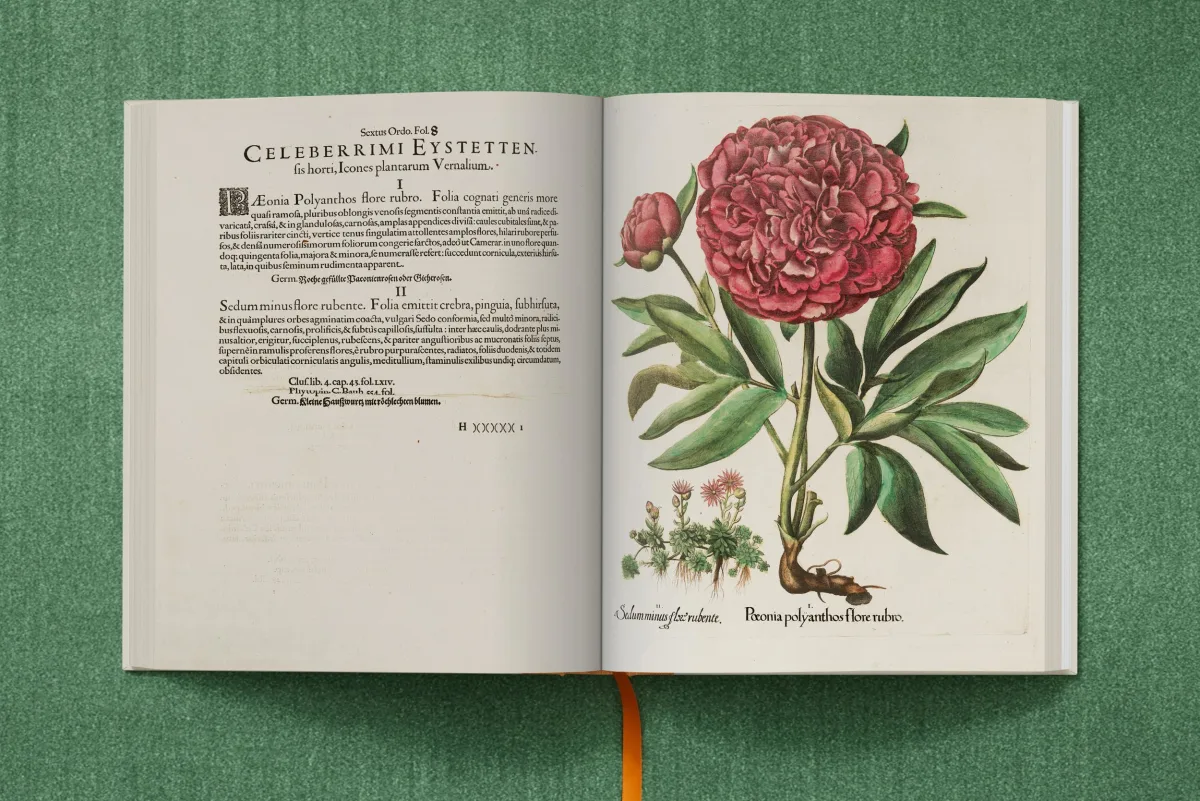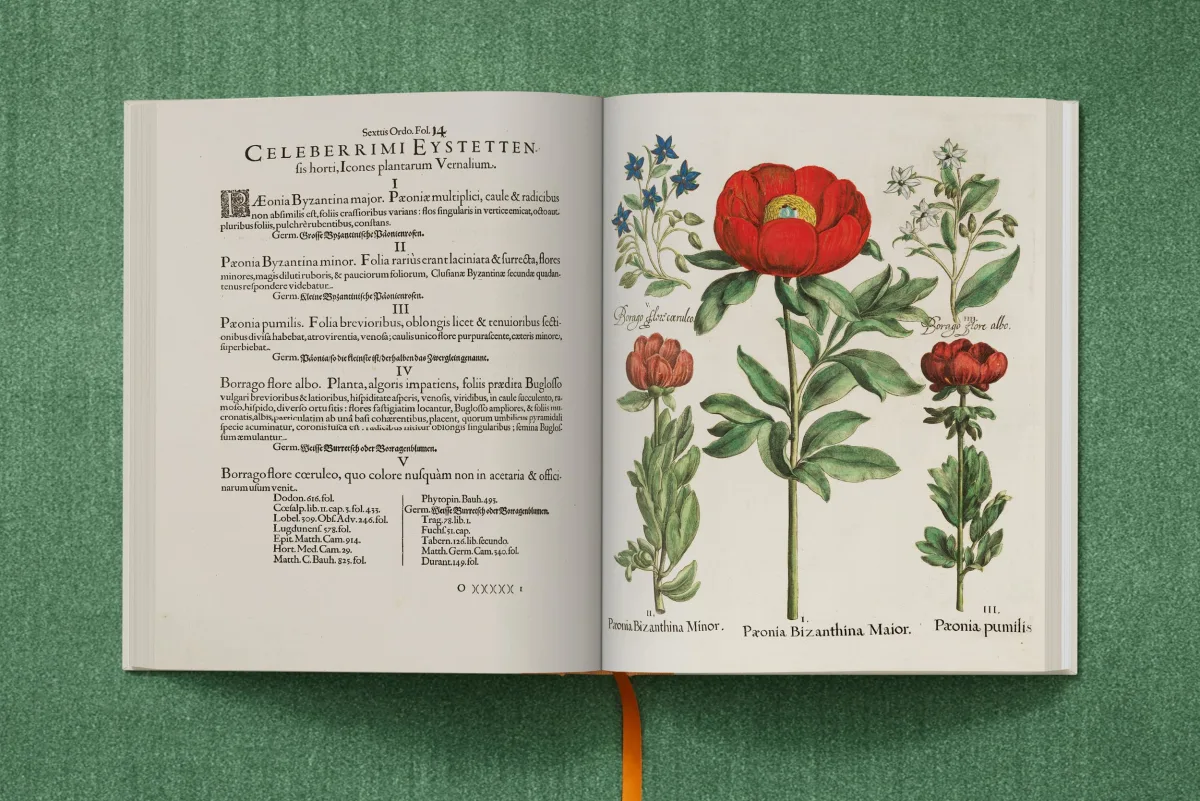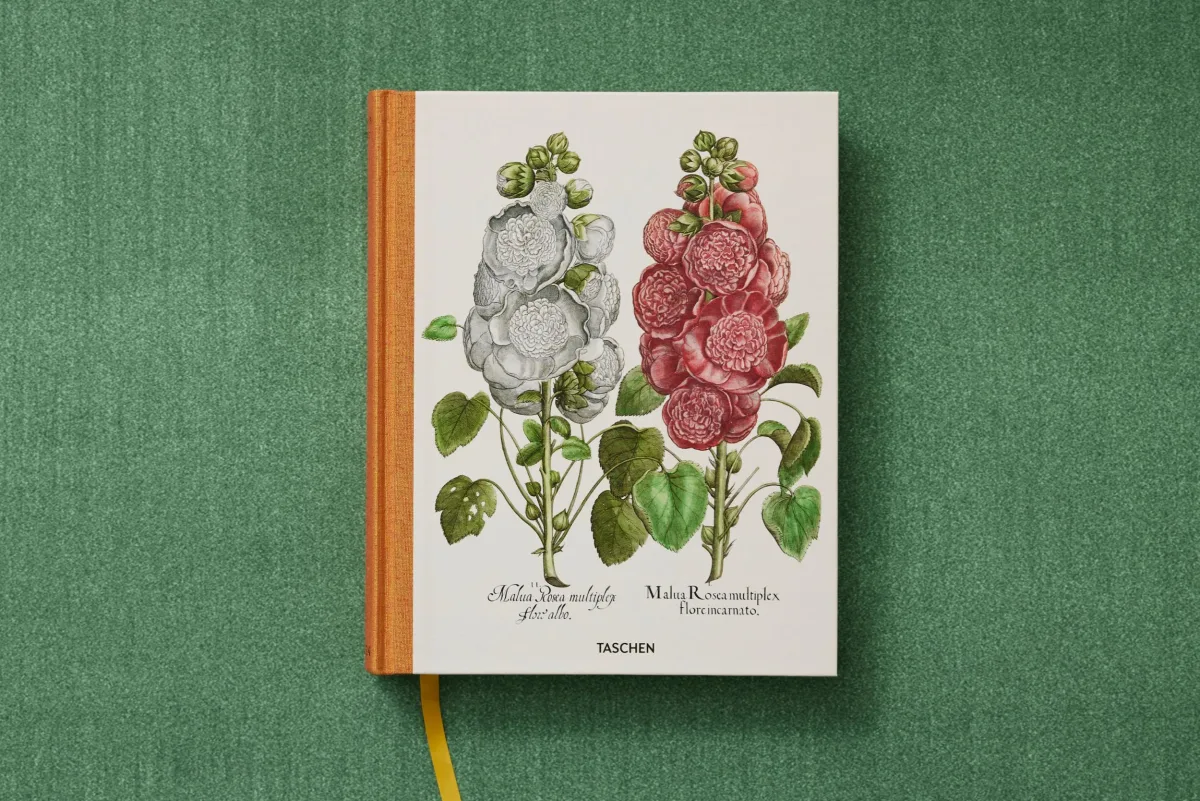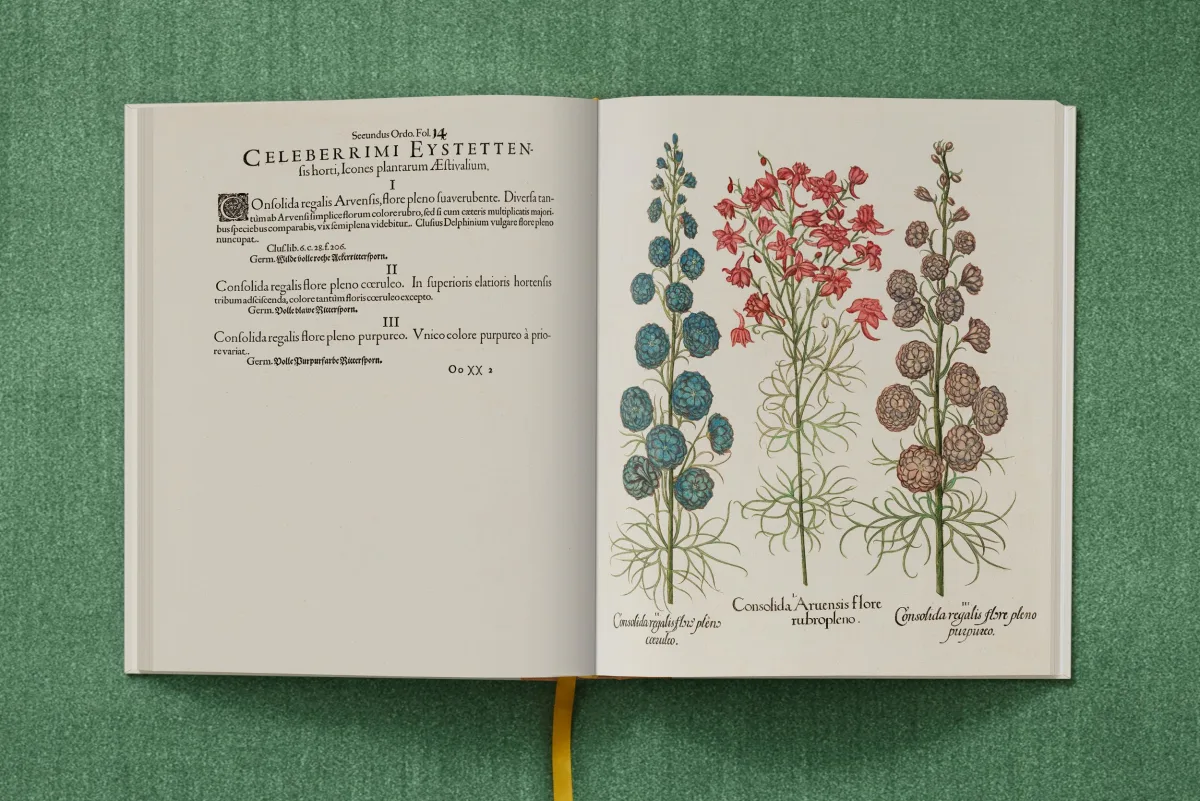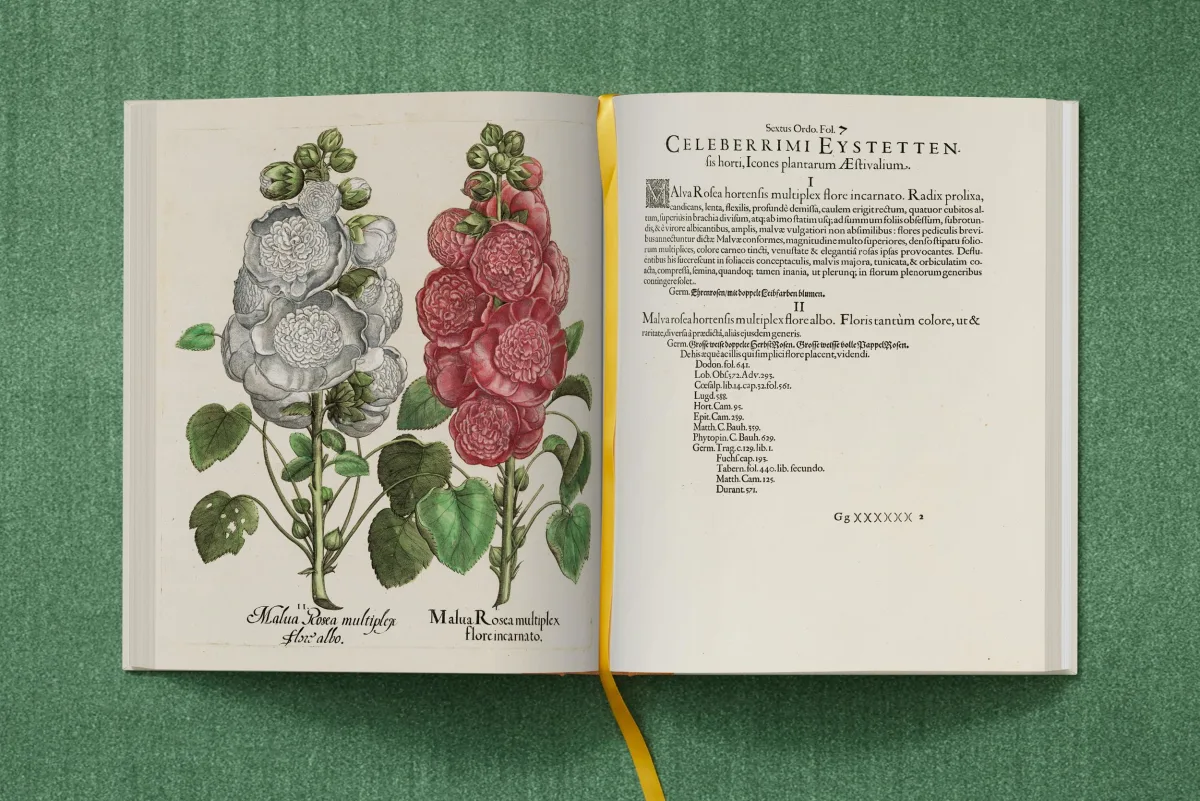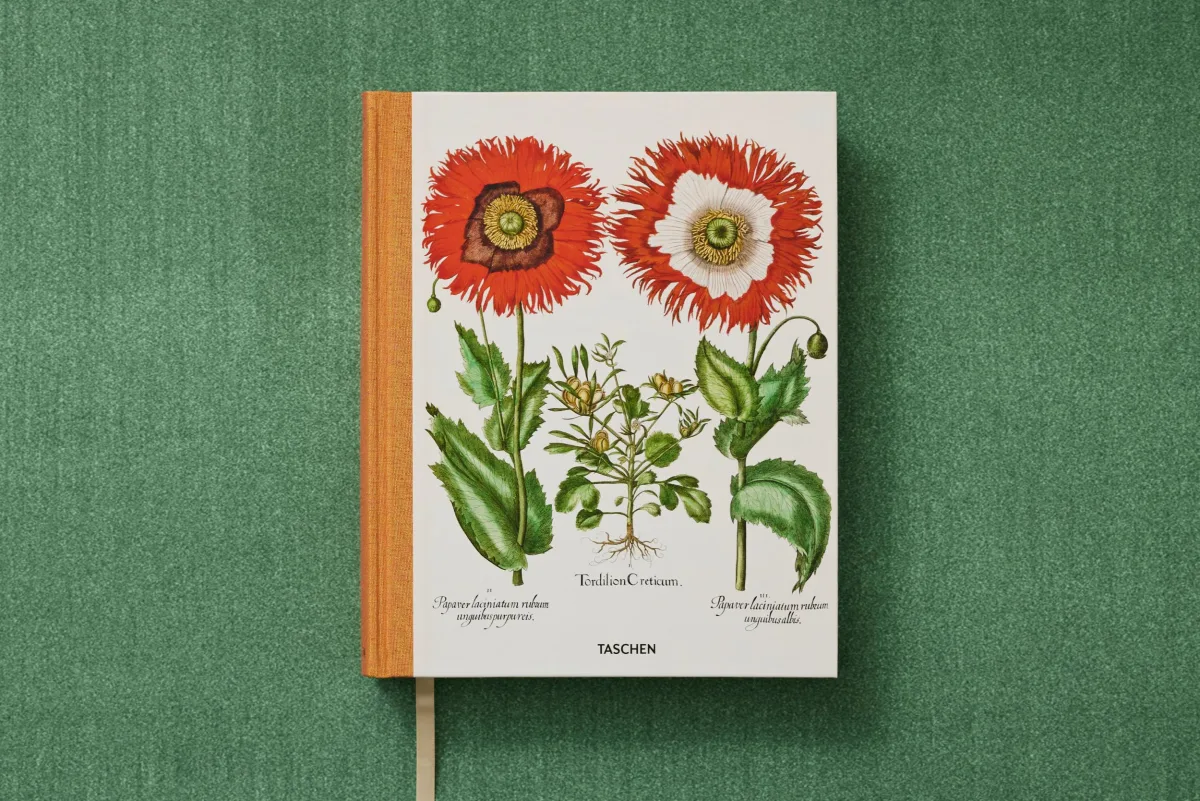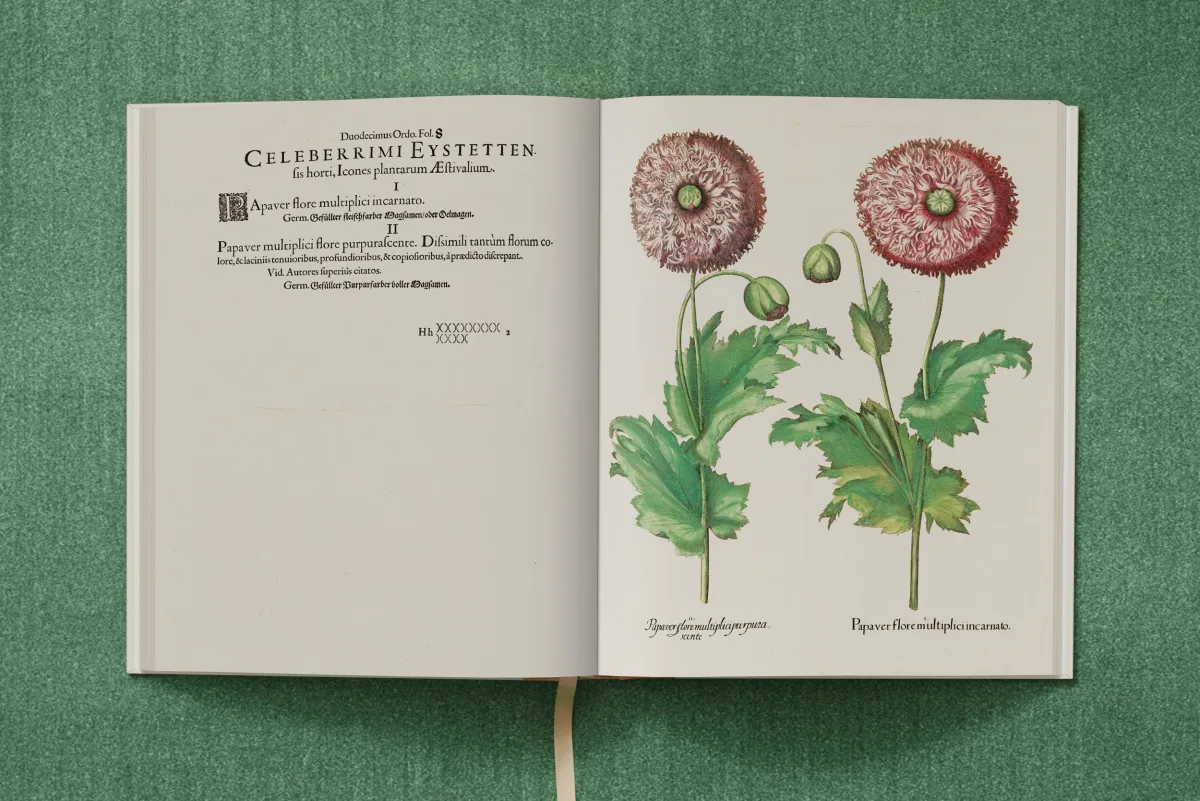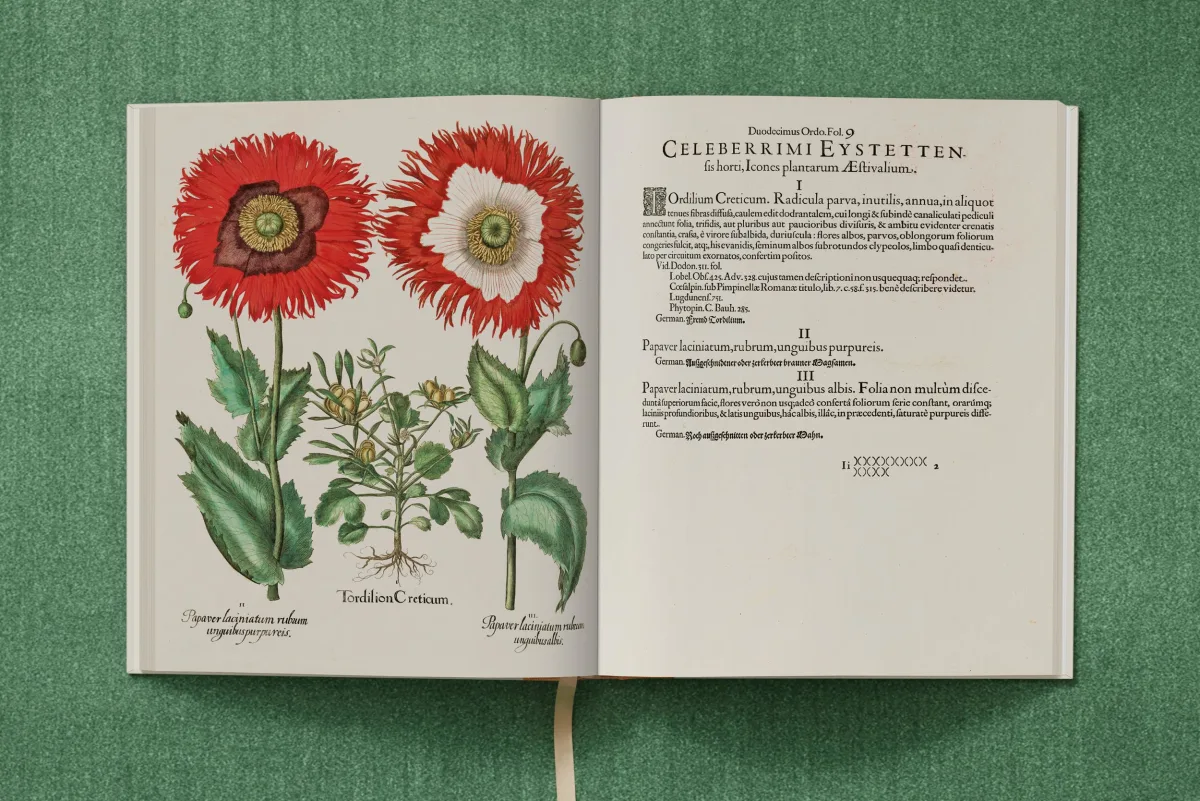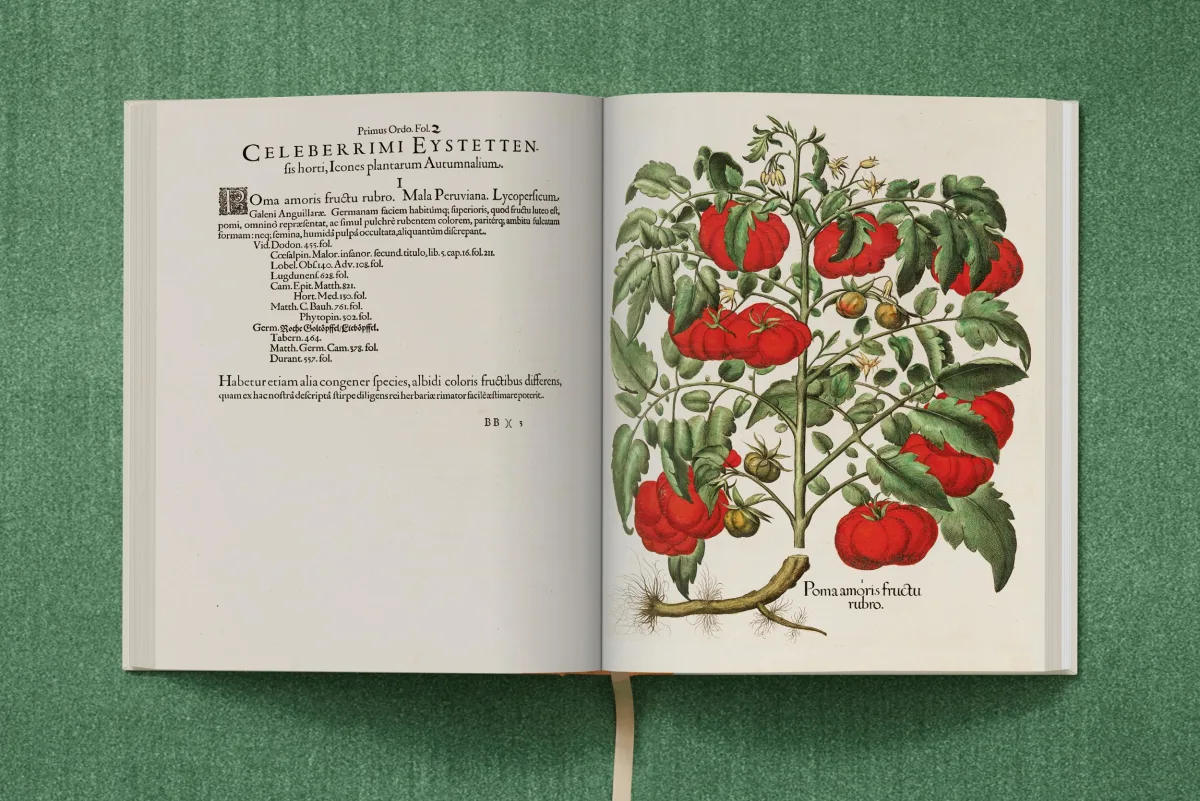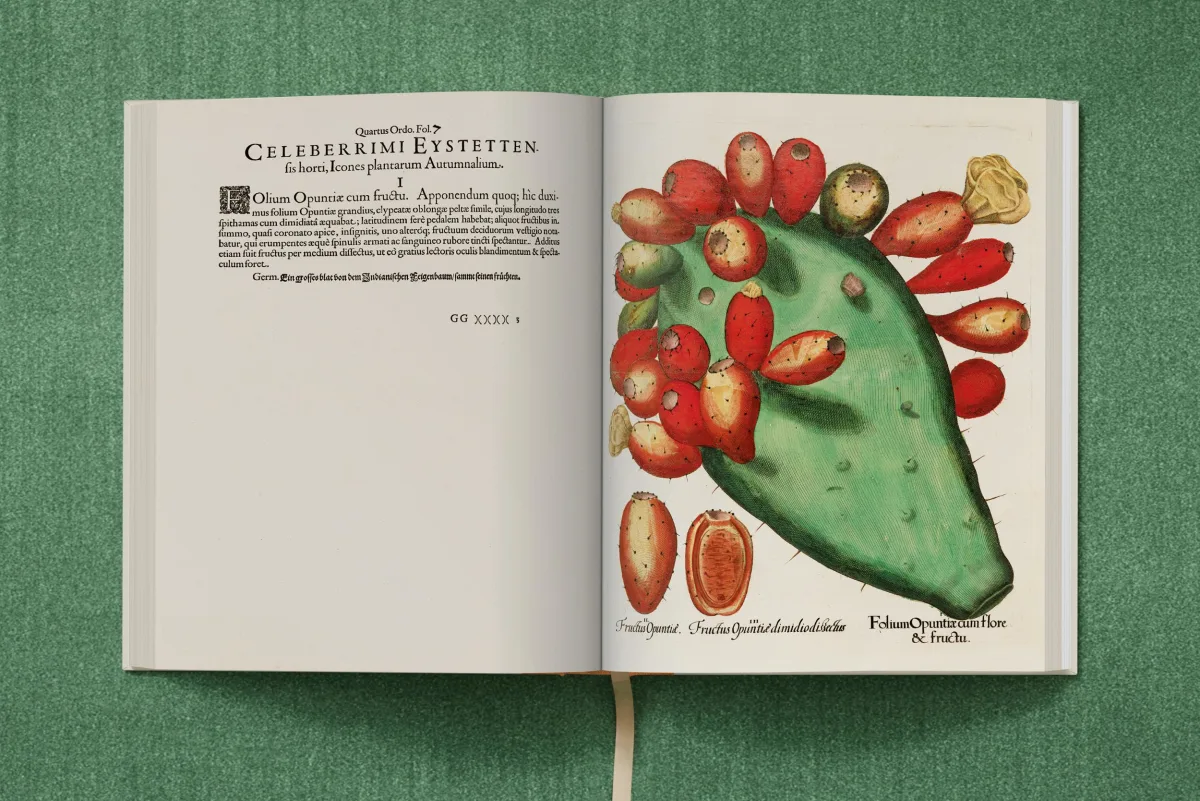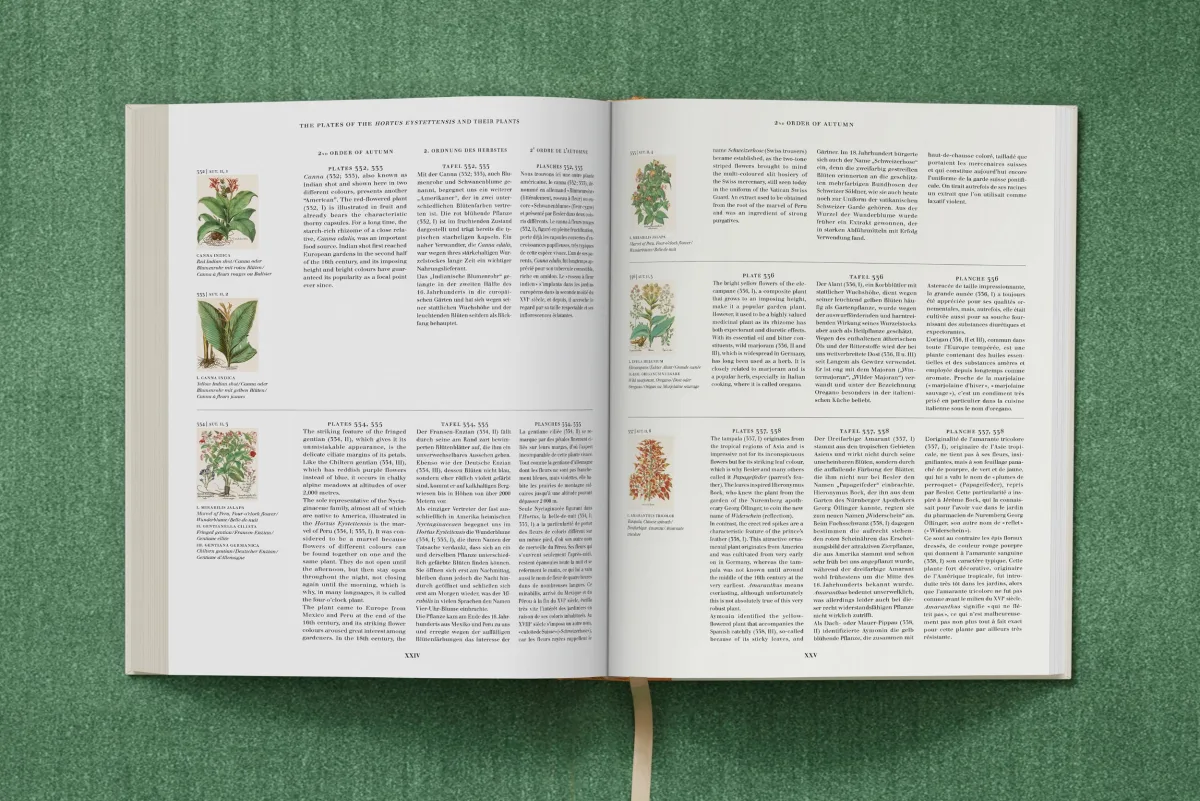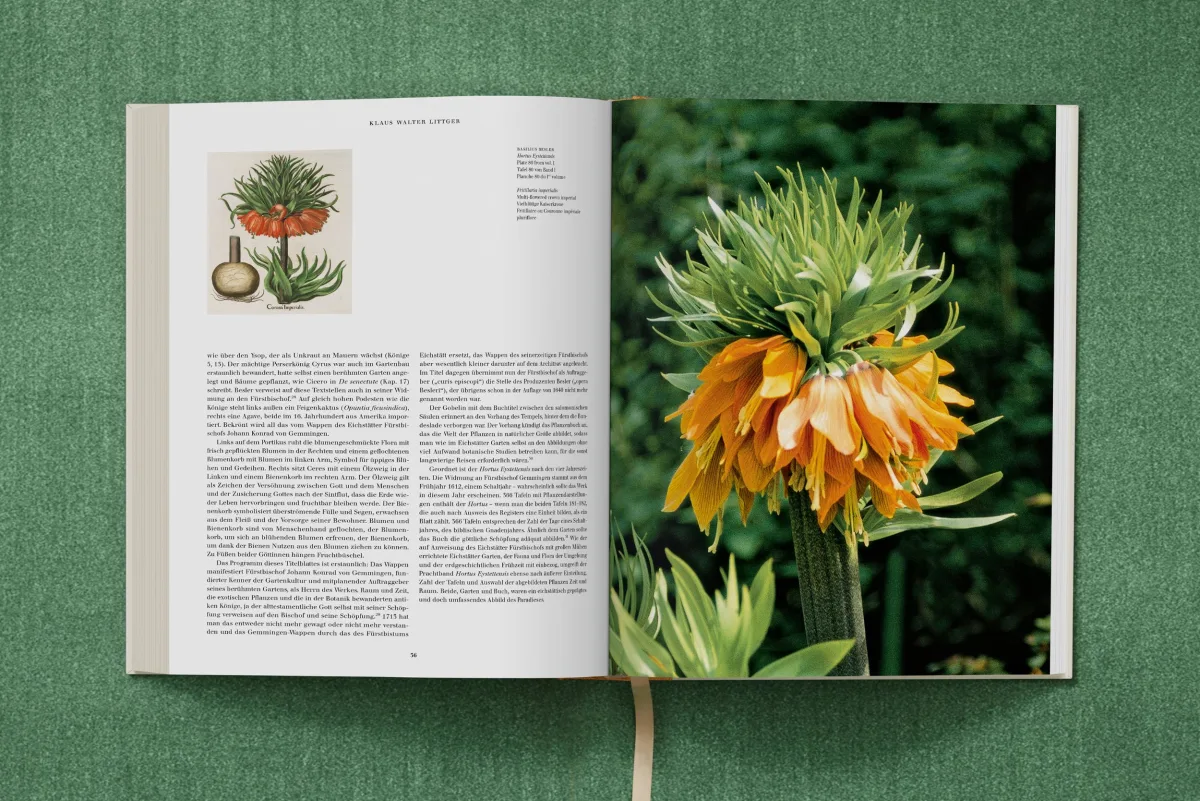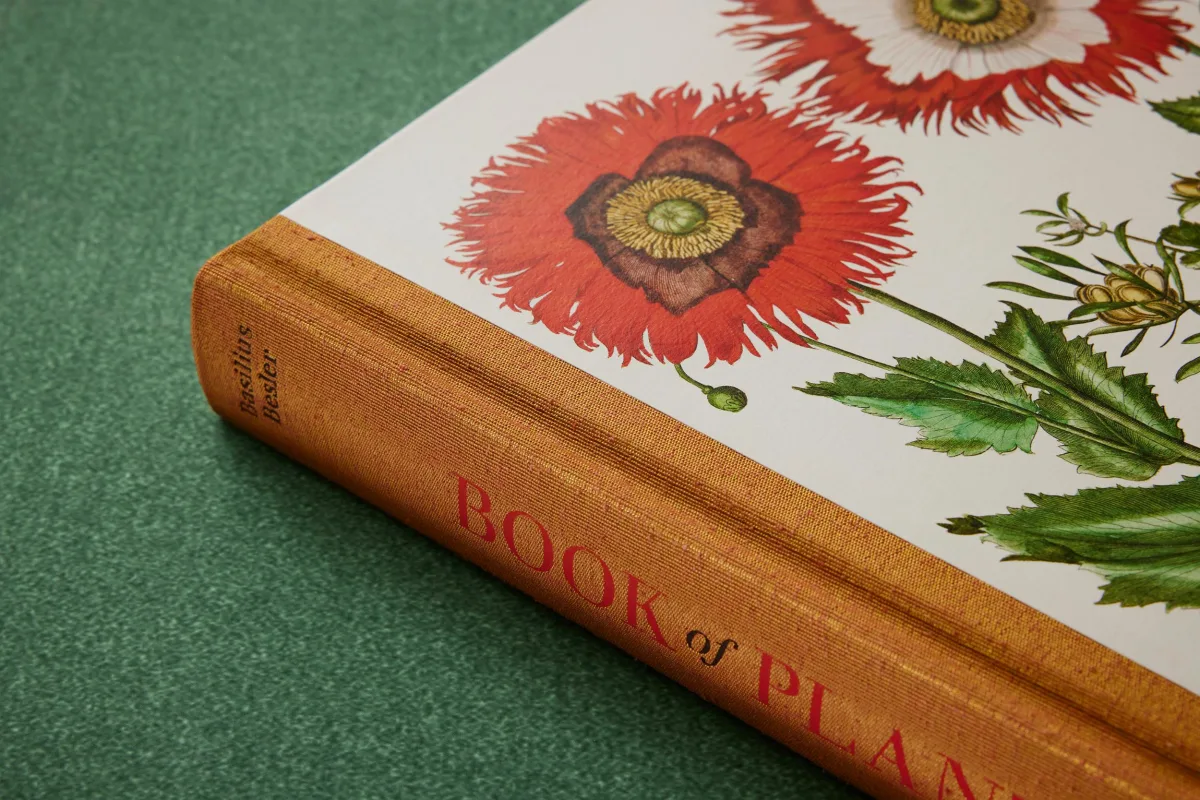Basilius Besler. The Garden at Eichstätt
200Edition: Multilingual (English, French, German)Availability: In Stock"One of the most magnificent historical documentations of botany... A magnum opus with hand-colored illustrations and detailed descriptions of 90 plant families, many of exotic origin. It seems even more eccentric, more exotic than the approach of the documentation at the time to publish a facsimile today: a wonderful homage to the Gutenberg galaxy threatened with extinction. Thank you, thank you!"
"The beauty of the illustrations and the quality of the print are a real treat... The book is the true garden. And therein lies the great value of the reprint. It is a botanical cabinet of curiosities."
"The compendium presents what one can encounter in nature so vividly, as if the plants and flowers were unique personalities, so precisely, lifelike and almost vividly they appear here page after page. This enormous book in folio format as a splendid edition makes an immediate impression... It is a heroic effort of TASCHEN to reprint this impressive work in the most opulent form... Excellently annotated and academically explained."
“This book should find its way to many a library and coffee table.”

Besler. The Garden at Eichstätt
200Botanical Beauty
A complete facsimile edition of the three-volume Hortus Eystettensis
The resulting Hortus Eystettensis, published in Nuremberg in 1613 and containing 367 hand-colored plates and detailed descriptions, was a work of meticulous execution and spectacular diversity, and remarkably expensive for its time. As the garden contained a variety of plants imported from exotic locales, the three volumes exhibited a remarkable range, covering a total of 90 families and 340 genera. Due to the decorative, stylized execution of these illustrations, which began to see plants in aesthetic, rather than merely practical or medicinal terms, the book is seen as a milestone in the art of botanical illustration. While published before a time of standardized classification systems, it was nonetheless later described by Carl Linnaeus as an “incomparable work”.
Besler’s catalog long outlived the gardens, which were destroyed in 1634 by invading Swedish troops during the Thirty Years’ War. However, a lengthy redevelopment project at the historic site has culminated in the opening of the modern Bastion Garden in 1998, containing many of the plants shown in the Hortus Eystettensis.
Offering high-quality reproductions of these arresting illustrations, based on the copy of the Hortus Eystettensis at the University Library of Eichstätt-Ingolstadt, this facsimile edition is accompanied by detailed plate descriptions of each plant’s botanical, pharmaceutical, and symbolic significance and an appendix of further essays which place the garden and the book in their historical contexts.
This edition presents a valuable piece of botanical literature which, on the rare occasions where a copy appears on the market, can fetch prices of over $1,000,000 at auction. In line with Besler’s original intentions, this facsimile unfurls the garden to a wider audience and captures it for posterity.
The authors
Klaus Walter Littger was deputy director of the Eichstätt-Ingolstadt University Library, and head of the university's collection of historical books and manuscripts. In addition to essays on German language and literature, he has published numerous works on the history of libraries as well as the diocese and University of Eichstätt, and on the history of its local music. He is also co-editor of a journal and a series on the history of the diocese.
Werner Dressendörfer is a pharmaceutical historian, academic librarian, and former honorary Professor at the University of Erlangen-Nuremberg. His particular spheres of interest are the history of the Early Modern herbal, the cultural history of useful and medicinal plants, and plant symbolism in art. He has written extensively on pharmaceutical and botanical history, and is the author of many of TASCHEN’s botanical publications.
Basilius Besler. The Garden at Eichstätt
Hardcover, three vols. in slipcase, 24.3 x 30.4 cm, 8.32 kg, 1096 pagesISBN 978-3-8365-9433-2
Edition: Multilingual (English, French, German)No reviews have been posted for this item yet. Be the first to rate this product.

